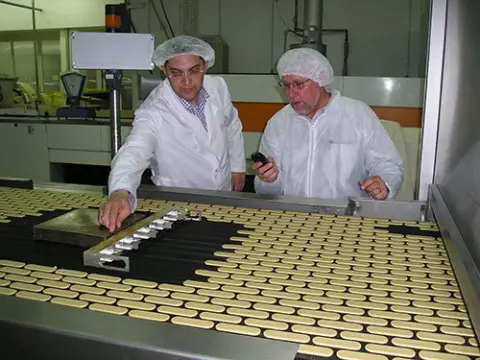In a commercial bakery, great products don’t just happen – they’re managed. Temperature and humidity monitoring turns the oven from a black box into a clear picture you can act on. When you can see how heat and moisture behave across every zone, you’ll move faster from start-up to spec, reduce re-bakes and keep quality steady from shift to shift. Achieving uniform baking with thermal profiling systems from Reading Thermal is easier than you may have expected possible.
Consistency Starts With Seeing the Bake
Color, volume, snap and softness all depend on what happens inside the oven, not just the setpoints on a screen. Temperature drives how quickly heat reaches the product; humidity shapes how moisture leaves it. If you only watch one, you’ll miss the reason behind slow color, early crust or day-two dryness. A simple, repeatable monitoring routine helps you spot small drifts – like a dry edge or a humid center – before they turn into lost minutes and scrap.
Temperature Tells the Pace, Humidity Sets the Finish
Think of temperature as the pace car and humidity as the track conditions. Too dry early, and crust can lock before the crumb’s ready, which slows internal cook and leads to tunneling. Too humid late, and color stalls while texture goes leathery. When you profile both together, you’ll time oven spring, structure set, and final color on purpose. That’s how buns keep their softness without smearing color, and crackers hold their crisp without over-drying.
What a Complete Profile Includes
A useful oven profile isn’t about drowning in numbers – it’s about a story you can read at a glance. You want to see how air temperature ramps zone by zone, where humidity peaks and falls, and when the product hits key set points. Overlaying today’s run with a known “golden” curve shows exactly where things drift. If Zone 2 runs cooler or stays wetter than usual, you’ll know to tweak setpoints, steam or dampers instead of adding dwell time and hoping for the best.
Reading Thermal’s SCORPION® 2 Data Logger gives you a practical way to capture temperature and humidity on the same pass. Pair it with the Temperature Sensor Array to map hot and cool regions across the belt, then add the Humidity Sensor to watch how moisture actually behaves inside the oven. SCORPION® Software ties it together with zone-by-zone visuals, overlays and shareable reports the whole team can use.
Turn Profiles Into Faster Decisions
Data earns its keep when it changes what you do next. If crackers are slow to color, for instance, a quick comparison may show humidity staying high too long in the middle zones; trimming moisture there often restores finish without raising temperature. Small, specific adjustments beat broad resets every time, and they’re how you shorten start-up, align multiple ovens, and keep schedules predictable.
Make Moisture Visible, Make Quality Repeatable
Temperature shows how heat arrives; humidity shows what moisture does with it. When you track both, you’ll cut guesswork, protect texture and shelf life, and hit color without stretching dwell time.
Learn more about achieving uniform baking with thermal profiling systems by speaking with a Reading Thermal expert. You can contact us online or give us a call at 610-678-5890. We very much look forward to working with you and showing what our equipment can do for your bakery.

